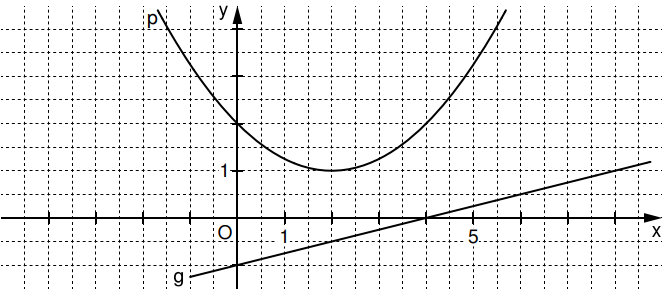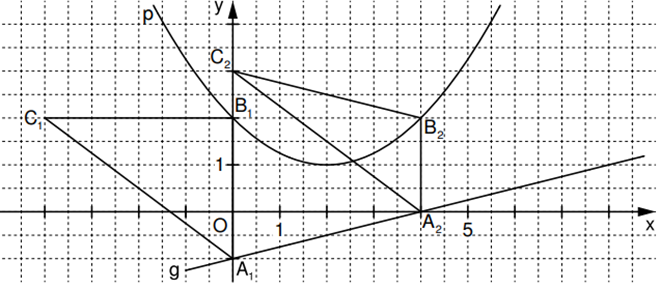Aufgabe B2
Gegeben sind die Parabel mit der Gleichung und die
Gerade mit der Gleichung .

Punkte auf der Geraden und Punkte auf der
Parabel haben dieselbe Abszisse . Sie sind zusammen mit Punkten Eckpunkte von Dreiecken . Es gilt: .
Zeichnen Sie die Dreiecke für und für in das
Koordinatensystem der Aufgabenstellung ein. (2 P)
Zeigen Sie rechnerisch, dass für die Länge der Strecken in Abhängigkeit von der Abszisse der Punkte gilt: . (1 P)
Die Dreiecke und sind gleichschenklig mit der Basis bzw. . Berechnen Sie die zugehörigen Werte von . (3 P)
Runden Sie auf zwei Stellen nach dem Komma.

